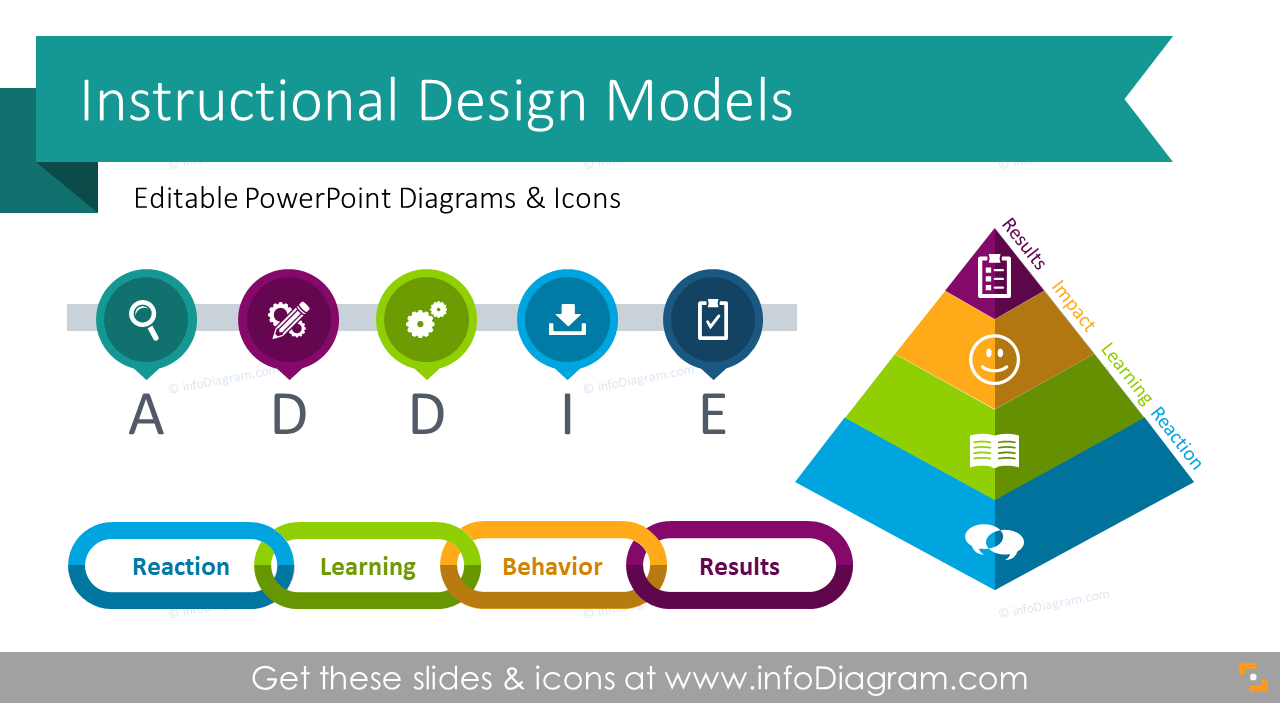Table Of Content

Organizations could make tangible improvements with new learning and development programs in that case. Skill Matrix template is a good start to identify missing competencies and find potential skill gaps in your organization. This means effective communication with both management and their employees (potentially through surveys or focus groups) to understand the existing situation. In addition, they give instructional designers a structure to rely on and consider as they progress through the development of new learning and development projects. ADDIE’s original “waterfall” design was linear, with each phase intended to be part of a sequence that informed and shaped the subsequent phase.
The five phases of the ADDIE framework
This will include a strategy, delivery methods (e.g., online, offline, blended), lessons, duration, assessment, and feedback. This phase is best served by organizing client calls and team meetings. In this ready-to-use canvas, you can collect essential information from your initial needs analysis. At every subsequent step, you should be designing, developing, and implementing a training program that responds directly to these needs. The ADDIE model gives lots of places for stakeholders to have their say in the planning process. Encouraging collaboration from initial analysis to final evaluation, the model ensures that the perspectives and expertise of various stakeholders are considered.
The Implement Phase
Because of its simple framework, today’s organizations still find parts of the ADDIE model useful and may choose to pull out phases and then adapt them for their purposes. By the end of the analysis phase, you should be able to identify the learners’ needs, describe the instructional goal, and be aware of constraints and available resources. Think about how you can create a buzz around the new learning program and shine a spotlight on desired behaviors.
ADDIE vs rapid instructional design
The implementation phase develops procedures for training facilitators and learners. Training facilitators cover the course curriculum, learning outcomes, method of delivery, and testing procedures. Preparation for learners includes training them on new tools (software or hardware) and student registration.
The SAM has multiple variations, but they all try to introduce iteration into the design process. This includes rapid prototyping and adding development and implementation earlier in the process. Mitigate these risks by taking time to carefully brief subject matter experts and the rest of your team, clarifying any questions, and setting realistic and clear deadlines! We’ve heard from a business school learning design team that they color-code sections of their courses in a high-level SessionLab outline of the program. Different colors make it immediately evident what is done, what is missing, and where builders and training developers need to do some work.
What to read next

No project should run its course in isolation, and in the absence of proper evaluation from the IDs. Since this stage gains much feedback both from IDs and participants alike, much can be learned and addressed. The Development stage starts the production and testing of the methodology being used in the project. In this stage, designers make use of the data collected from the two previous stages, and use this information to create a program that will relay what needs to be taught to participants. If the two previous stages required planning and brainstorming, the Development stage is all about putting it into action. This phase includes three tasks, namely drafting, production and evaluation.
How Long to Develop One Hour of Training? Updated for 2017 - ATD
How Long to Develop One Hour of Training? Updated for 2017.
Posted: Tue, 09 Jan 2018 08:00:00 GMT [source]
Training methods such as role-playing will be used to reinforce these skills, while visual aids like infographics will be used to keep the trainees engaged. This question is also at the center of a lively discussion in SessionLab’s free community. Join to share notes with other practitioners and add your perspective.
Helping businesses embrace their future through L&D.
After completing the development of the course material, the designers should conduct an imperative pilot test; this can be carried out by involving key stakeholders and rehearsing the course material. The feedback obtained from the pilot would also be beneficial to identify the weaknesses and further enhance the whole process before implementation (Davis, 2013). In the analysis phase, the instructional problem is clarified, the instructional goals and objectives are established and the learning environment and learner’s existing knowledge and skills are identified.
Training Design and Delivery Certificate - ATD
Training Design and Delivery Certificate.
Posted: Sun, 29 Jul 2018 09:15:14 GMT [source]

This is important to ensure features are always working, the course content aligns with students’ expectations and learning goals, and instructors are able to efficiently engage with students. The choice often comes down to the team putting together the learning and development course and how they like to work. Some prefer taking the time to fully understand the problem, then utilizing ADDIE’s more comprehensive framework to deliver a great product. Others enjoy learning by doing and seeing what fast prototype courses look like in practice before refining based on feedback. ADDIE training is a learning development model for Analysis, Design, Development, Implementation, and Evaluation.
This phase of the ADDIE model also requires testing and debugging all planned materials to make sure they flow well, don’t contradict one another and work as intended. In the case of technology, programmers should test programs to ensure their proper function, and in the case of content, editors should carefully review it for accuracy and pedagogical effectiveness. The original Bloom’s Taxonomy (1956) illustrated levels of cognitive goals, from simple to complex, in the shape of a pyramid. These verbs will help you write learning objectives that are clearly aligned with the desired learning outcomes.
AnalysisIn the analysis phase of the ADDIE model the instructional problem is identified. The instructional goals, success metrics, and overall objectives are also established. Information regarding the learner such as the learning environment, preferences, demographics, and existing knowledge and skills are also identified during this phase. During the evaluation, focus on whether the course has met the goals for the course, implementing feedback from the learners, and potentially making content changes or updates.
These five clearly defined processes help ensure training programs and their resources have the required elements to succeed. The answer to this question will help you determine the best delivery tool. Find out whether your learners prefer face-to-face learning, hands-on skill-building, or a mixture of both, which would point you to a blended learning approach. During this formative evaluation, you’ll review each phase to make necessary adjustments and better inform the following step, and inform improvements for the overall process. You’ll need to conduct a formative evaluation throughout the course, assisting the instructor in examining and recording what is and isn’t working and making appropriate adjustments.
The more detailed you are in your design outline, the easier it will be to get through the development phase. To avoid the pitfall mentioned above, talk to your stakeholders and schedule regular conversations regarding training needs. When these conversations occur, the stakeholders may discover that training isn’t always the answer. When training is the answer, you can work together to create meaningful plans that are based on the values of the students you want registering for your courses.
During the implementation phase, a procedure for training the facilitators and the learners is developed. The facilitators’ training should cover the course curriculum, learning outcomes, method of delivery, and testing procedures. Preparation of the learners include training them on new tools (software or hardware), student registration. Most of the current instructional design models are spin-offs or variations of the ADDIE model; other models include the Dick & Carey and Kemp ISD models. One commonly accepted improvement to this model is the use of rapid prototyping. This is the idea of receiving continual or formative feedback while instructional materials are being created.
People have different stories about the origins of the “ADDIE model”. For example, many point to an ADDIE-style model in Branson’s Interservice Procedures for Instructional Systems Development from 1975. However, as Michael Molenda showed in a crucial essay from 2003, no major author has ever set out to explain an “ADDIE model”. Furthermore, even discipline-leading books on instructional design seldom refer directly to the ADDIE model. The first and arguably most important phase in the ADDIE model is the analysis phase. The ADDIE model analysis phase is where you will gather all of the information you have at the outset of the project to define your approach.

No comments:
Post a Comment